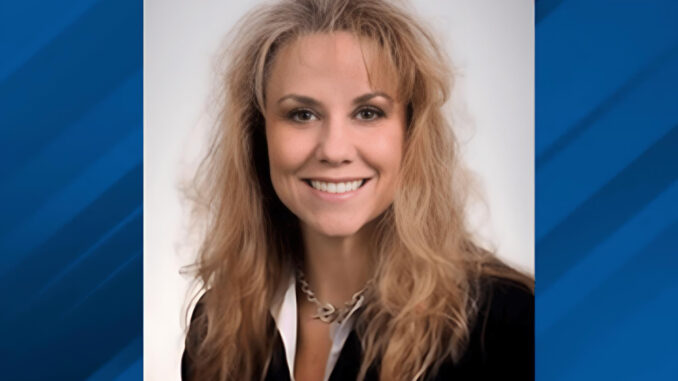
2025 Guide to Ohio Workers’ Comp: Ohio BWC continues to reduce rates while improving safety
By Terry Troy
While she assumed the helm only last November, Stephanie McCloud, the new administrator/CEO of the Ohio Bureau of Workers’ Compensation (BWC) is hardly unfamiliar with the organization, nor the responsibilities and duties it takes to keep one of the largest state-run insurance systems in the United States on course.
Established in 1912, the Ohio BWC is the exclusive provider of workers’ compensation in our state. The Ohio BWC is one of only four state run agencies in the nation that are exclusive, the others being Washington, Wyoming and North Dakota.
If you are familiar at all with our state government, you probably recognize McCloud’s name. She served as Governor DeWine’s chief of staff for some 22 months beginning in January of 2023, but before joining the Governor’s staff, she served as the BMW’s Administrator/CEO starting in 2019.
Today, McCloud leads a staff of nearly 1,600 who serve Ohio’s injured workers as well as more than 258,000 employers. The Ohio BWC has assets of approximately $23 billion.
During her previous tour of duty at the BWC, McCloud established a reputation for leadership and efficiency, increasing services offered while reducing premiums charged to employers.
“We continue to support Ohio’s employers by finding ways to save them money, allowing them to reinvest in their businesses and their employees,” says McCloud. “Over the past decade, we have saved Ohio employers more than $15 billion in workers’ compensation costs through dividends, discount programs, rate reductions and greater operational efficiencies.”
Ohio’s private employers will pay nearly $60 million less in premiums next fiscal year due to a 6% rate reduction approved by the agency’s Board of Directors. This reduction will become effective July 1, 2025, and follows a 7% rate cut for private employers last year.

Photo by Vivien McClain Photography.
Of course, the 6% rate cut represents a statewide average. The actual premium change for an individual employer will differ based on multiple factors, including employer type or classification, payroll levels, recent claims history and their participation in various BWC programs.
“I am pleased to announce a 6% rate reduction for Ohio’s private employers,” said Governor Mike DeWine in announcing the potential savings for businesses earlier this year. “Ohio’s low and steady rates are a result of businesses adopting a culture of workplace safety.”
“Private employers have received 16 rate reductions in the last 17 years,” adds McCloud. “These rate cuts allow Ohio’s employers to reinvest in their business and their employees.”
Overall, the average rate levels for private and public Ohio employers in the BWC system are at their lowest in over 60 years.
Prior to the 6% rate cut, employers received a rate cut of 7% in 2024 which saved them $67 million over 2023 premiums. In 2023 a 3.9% rate cut was approved for public employers.

“Ohio’s premium rates are among the lowest in the country,” says Kim Norris, chief communications officer for the Ohio BWC. “We listen to our customers and have heard our stakeholders tell us how much they appreciate our low and steady rates.”
A recent study found that Ohio had the fifth lowest rates through January of 2022, down from the third highest in 2008, according to the Oregon Study 2022 Report. This means Ohio’s rates are improving much faster than most other states.
Despite the rate cuts and other programs, the Ohio BWC remains committed to prioritizing workplace safety, says Norris. By engaging in employee well-being programs, employers continue to reduce workplace injuries and minimize hazards. The most recent data puts Ohio’s private industry rate at 2.2 injuries per 100 workers for the calendar year in 2023, lower than the national average of 2.4 injuries.
So, who needs Ohio the BWC?
By Ohio law, employers with one or more employees must have workers’ compensation coverage and must keep their policy information updated. That means if you are starting a new business, working as an independent contractor or subcontractor and you have employees, if you are acquiring, merging, purchasing and/or selling a business, you need to update your coverage.
“Our job is ensuring that workers injured on the job receive the medical treatment necessary, fair compensation during recovery and support to return to work safely,” says Norris.
“We are dedicated to our mission of delivering consistently excellent experiences for each BWC customer every day.”
As for her return to the Ohio BWC, McCloud brings with her extensive leadership and management experience to an organization that is clearly pointed in the right direction.
She has a diverse background that encompasses more than 20 years of experience in public administration and workers’ compensation.
Before joining the DeWine administration, McCloud served as senior vice president at Sedgwick Claims Management Services while managing her private Columbus law firm, McCloud Law LLC.
McCloud began her career as a staff attorney at BWC before serving as legal counsel to both former Governor George Voinovich and the Ohio Department of Transportation. She later joined the office of former Attorney General Jim Petro, first as senior deputy attorney general before advancing to chief counsel.
McCloud is also a former Truro Township Trustee and active community leader. She served six years on the Counselors, Social Workers, Marriage & Family Therapists Board. She also served on the board of the Maryhaven behavioral health and addiction treatment center for over a decade.
During the peak of the COVID pandemic in November 2020, McCloud was appointed as the director of the Ohio Department of Health. Governor Mike DeWine chose her for her knowledge of state government and management expertise, which were both needed during the pandemic.
